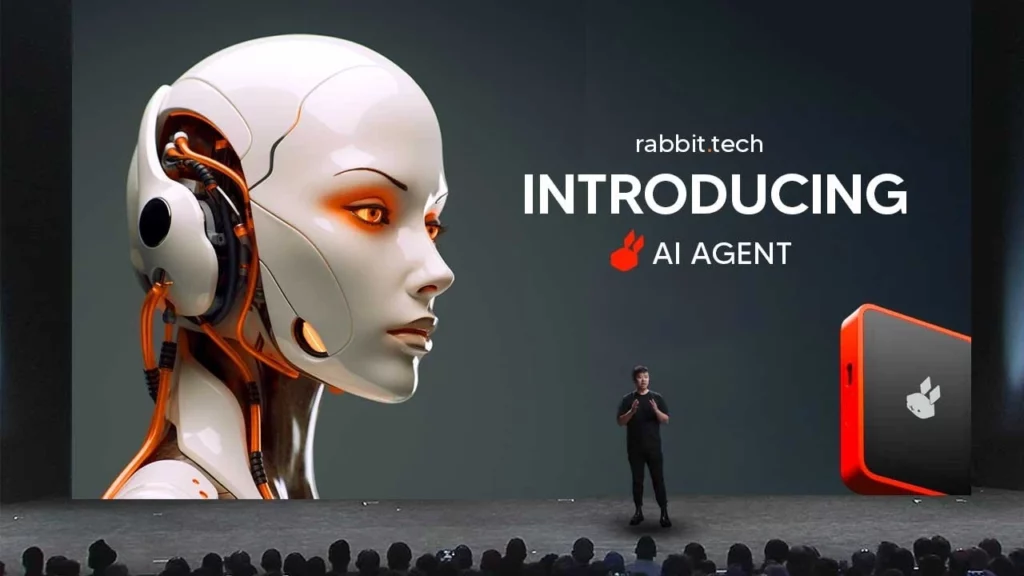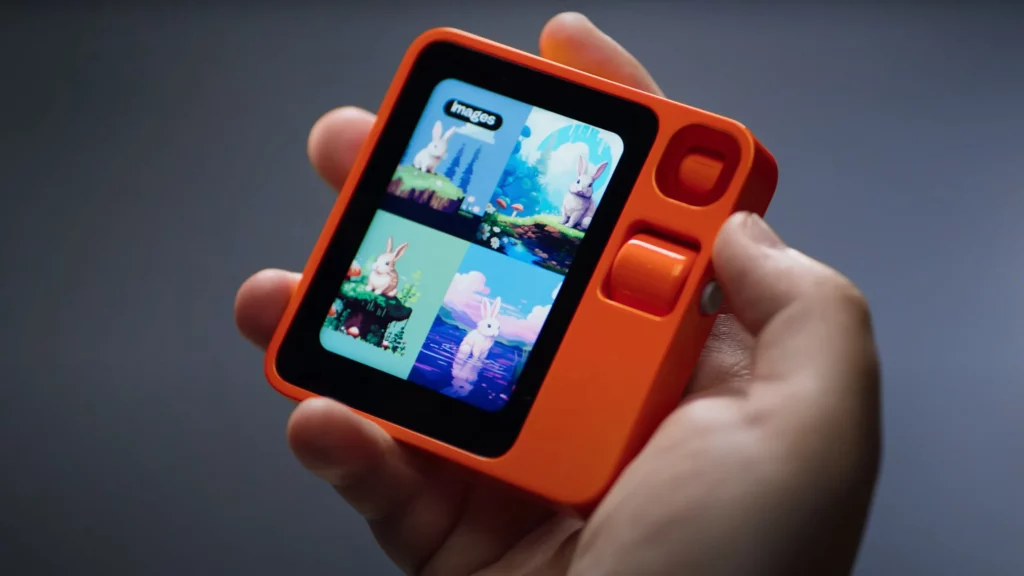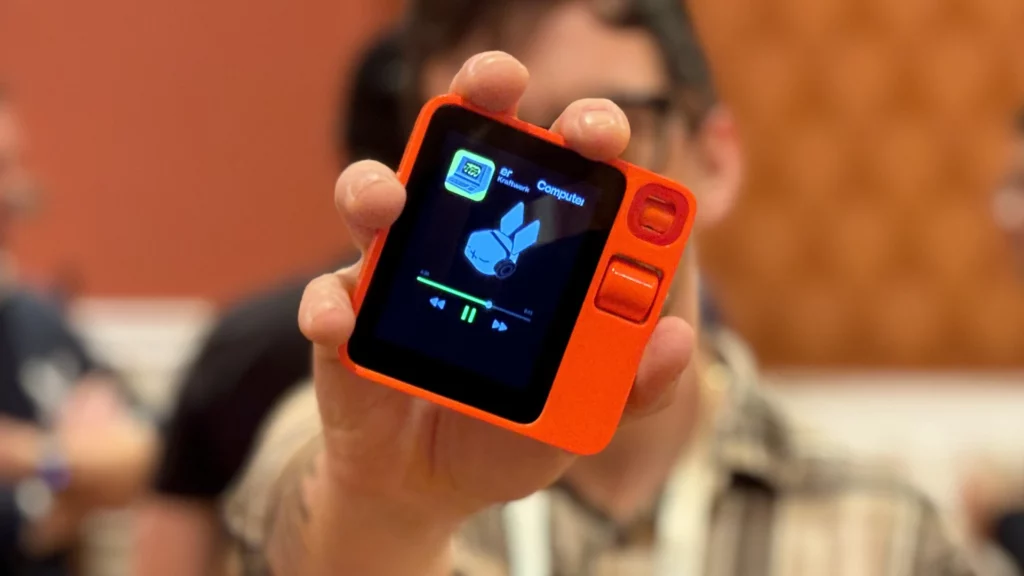Jesse Lyu, the CEO and founder of an AI startup named Rabbit, has introduced a groundbreaking $199 device called the R1. Unlike other companies aiming to replace smartphones, Lyu emphasizes that Rabbit’s focus isn’t on immediate phone replacement. However, the R1 is so impressive and ambitious that Lyu believes it could eventually replace your smartphone, just not in the immediate future.
Rabbit R1’s Specifications, Features and Uses
The R1 resembles a Playdate console or a modernized version of those handheld TVs from the ’90s. It’s a compact standalone device, roughly half the size of an iPhone, featuring a 2.88-inch touchscreen, a rotating camera for photos and videos, and a scroll wheel/button for navigation and interacting with the built-in assistant. Engineered with a 2.3GHz MediaTek processor, 4GB of memory, and 128GB of storage, the rounded design is a result of collaboration with the design firm Teenage Engineering. While Rabbit doesn’t provide detailed information about the battery, they claim it lasts “all day.”
Introducing r1. Watch the keynote.
— rabbit inc. (@rabbit_hmi) January 9, 2024
Order now: https://t.co/R3sOtVWoJ5 #CES2024 pic.twitter.com/niUmjFvKvE
The noteworthy aspect of the R1 lies in its software – specifically, Rabbit’s operating system, known as Rabbit OS, and the underlying AI technology. Unlike a large language model such as ChatGPT, Rabbit OS is built on a concept called a “Large Action Model.” In essence, it functions as a versatile controller for various applications. Jesse Lyu explains that the goal was to create a universal solution similar to large language models. The aim is to have a tool that can seamlessly activate Rabbit’s services across different platforms, be it a website, an app, or any other desktop environment.

You can read about best tablets that were launched at CES 2024 on our website.
The R1 follows a concept similar to Alexa or Google Assistant. With Rabbit OS, it can manage tasks like controlling your music, ordering a car, purchasing groceries, sending messages, and more, all through a unified interface. There’s no need to juggle between different apps and logins – simply ask for what you need, and the device takes care of it. The on-screen interface of the R1 consists of category-based cards for music, transportation, video chats, and more. According to Lyu, the screen is primarily there for you to confirm the device’s actions.
The Large Action Model (LAM) underwent training through human interactions with apps like Spotify and Uber. Essentially, people demonstrated to the model how these apps functioned. The LAM learned to recognize elements like the Settings icon, understand order confirmations, and locate search menus. According to Lyu, this knowledge can be applied universally to any app.

Moreover, the R1 includes a dedicated training mode. Users can teach the device specific actions, and it claims to replicate those actions independently in the future. As an example, Lyu explains, “You can say, ‘Go to a software called Photoshop. Open it. Grab your photos here. Make a lasso on the watermark and click. This is how you remove the watermark.‘” Lyu mentions that it takes 30 seconds for Rabbit OS to process this training, after which the device can automatically remove watermarks from photos moving forward.
Listening to Lyu discuss Rabbit OS and the R1, the company’s vision for this device seems a bit unclear. While it lacks the power to fully replace your phone, it can handle video calls and even accommodates a SIM card. Primarily marketed as a voice assistant, it comes with a screen and a camera, blurring the lines between being just a voice assistant and a multifunctional device that performs various voice assistant tasks. Rabbit emphasizes that they’ve prioritized security and privacy in designing Rabbit OS, yet users are asked to log in to some of their most frequently used services through the R1’s interface. According to Lyu, the R1 is seen as both a cool accessory and a potential all-in-one solution for various tasks in the future.



